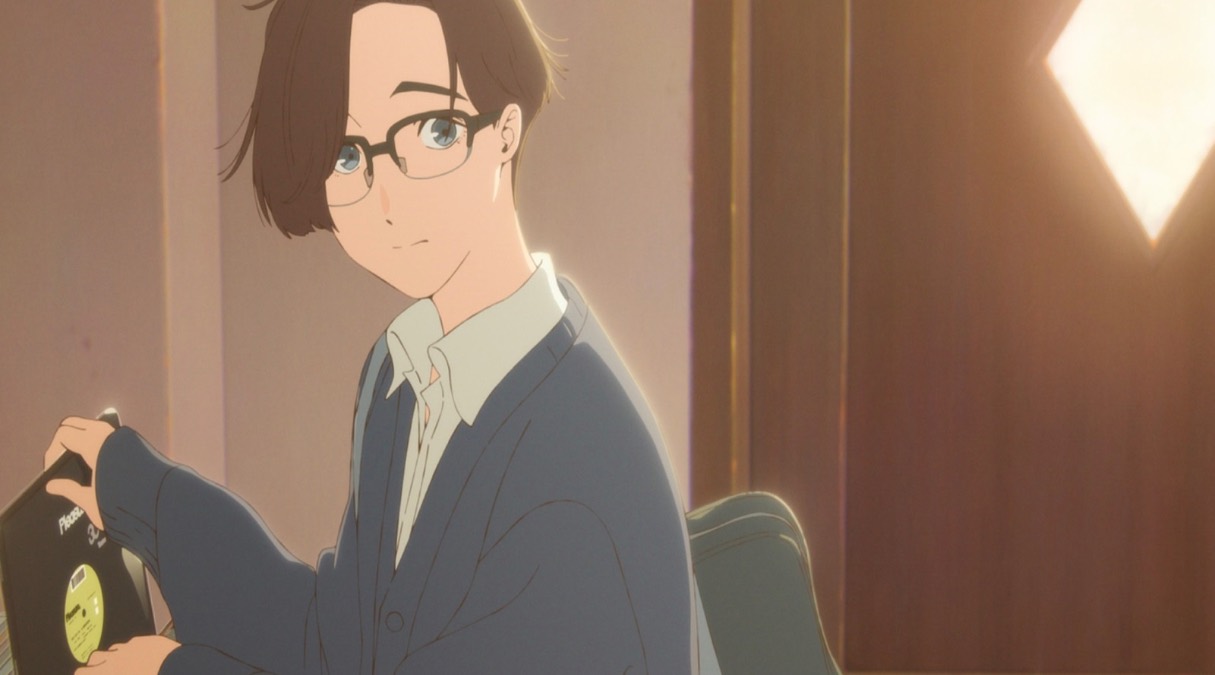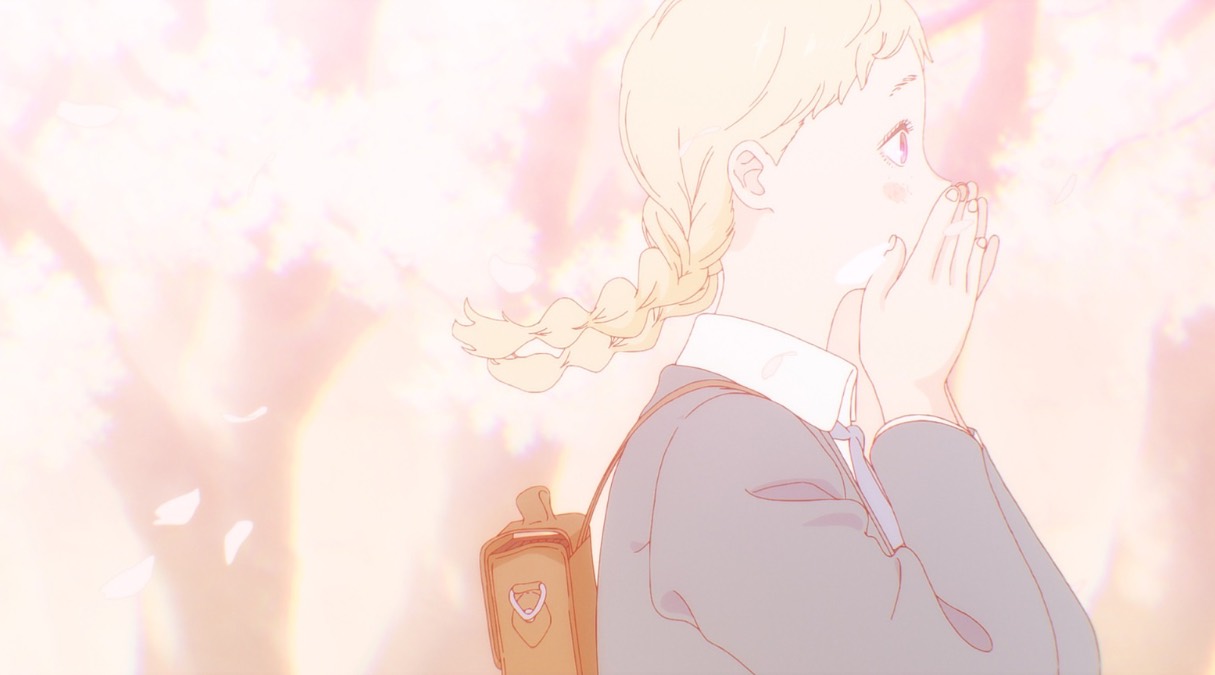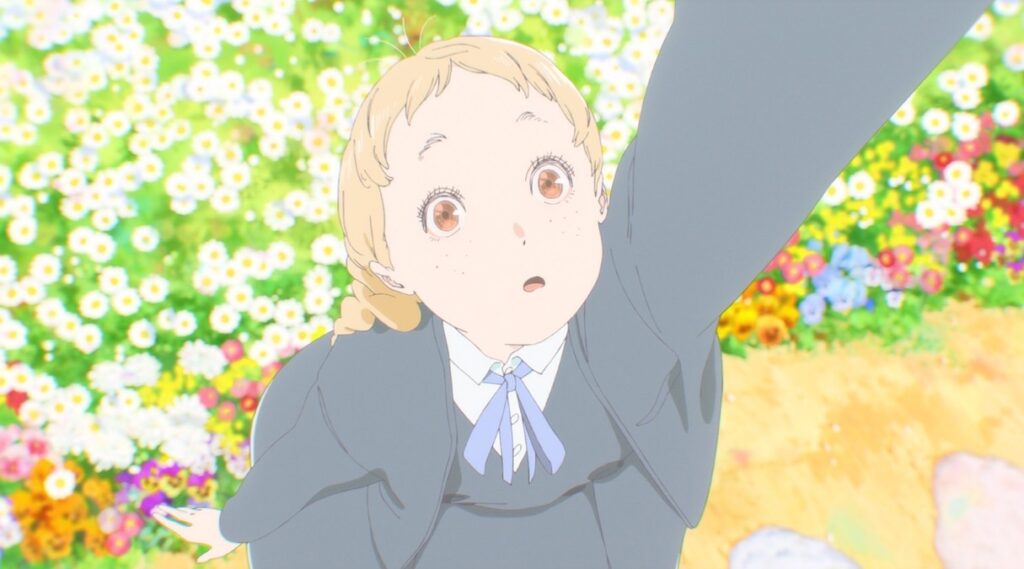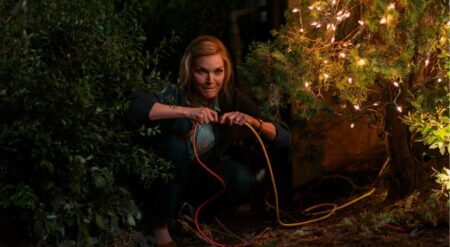The Colors Within is director Naoko Yamada’s most refined picture. The film distills her essence with graceful tenacity that lays bare her propensity for suggesting emotions and connections rather than explicitly stated. Produced by Science Saru, who teamed with the director through her ambitious series, The Heike Story, the film is another stunning entry into an ever-growing and impressive resume. As her characters stumble and try to comprehend their feelings and the tethers that bound them together, Yamada’s gaze offers clarity. We know these characters, even if they’re trying to figure themselves out.
Yamada once more goes the coming-of-age route in The Colors Within, with familiar themes that touch upon her other films, A Silent Voice and Liz and the Blue Bird, peppered within. The film follows Totsuko (Sayu Suzukawa), a teenage girl with synesthesia and the ability to see the ‘colors’ of others. She meets her enigmatic classmate, Kimi (Akari Takaishi), who gives off the most beautiful color. Through another meeting with the soft-spoken Rui (Taisei Kido), a music enthusiast, the three form a band despite Totsuko not being a musician.
Directed by Yamada and written by long-time collaborator Reiko Yoshida, the film follows Totsuko, Kimi, and Rei as they navigate their burgeoning bonds with one another, their passion for music, and how they influence one another through hardships and self-doubt. Totsuko is the guiding force of their friendship, with Kimi and Rui much more introverted and dealing with silent, distanced pain.
The Colors Within understands the significance of connection.

Kimi drops out of school but fails to tell her grandmother, spending her days at her job at a record store. Rui, meanwhile, is deeply passionate about music but is expected to become his remote town’s doctor, following in his family’s footsteps. And while Totsuko is relentlessly cheerfully optimistic, even her past is clouded by obscured desires as she whirls away, pirouetting through the halls of her Catholic boarding schools, not in the dance studio where she spent her youth.
The higher calling of music and our ability to connect provide the omnipresent spirituality often embedded in Yamada’s work. Music is the throughline as these friends form a fast, intimate friendship of shared wants. The friendship between Totsuko, Kimi, and Rui makes the bleeding heart of The Colors Within beat. Tender and wanting, we see as they burrow into one another’s lives.
Yoshida utilizes a less is more approach in writing the characters, allowing their interactions and how they relate to one another to do the heavy lifting. Observational and deeply empathetic, the film unravels with a steady, rhythmic beat.
Seeing the world through Totsuko’s gaze.

A queer undercurrent supplies thematic, understated tension, though it’s never explicitly stated. But it’s found in Totsuko’s infatuation with Kimi — platonic or otherwise — as she’s stunned by the beauty of Kimi’s aura. We see it in their spending the night eating snacks and trading secrets in Totsuko’s boarding room and Rui’s flamboyant lavender and flared suit at their pivotal performances. There are hints, and it provides a textured emotional core. But again, the magic lay in the film’s refusal to overplay its hand.
Beyond the writing, The Colors Within is a visual feast of competing styles that create something cohesive in tone and imagery. Yamada’s longstanding fixtures remain prominent. The flower imagery that blooms around them, winter giving way to spring, visualizes the passage of time and the coming-of-age narrative as the three become their truest, wildest selves while with the others. Splotches and splatters of color help us see the world like Totsuko does through hazy auras and shocks of vibrancy.
The film marries styles so fluidly that it’s easy to bypass its intricacies. But an immeasurable amount of refined craft and artistry permeates throughout. The bold color stories are integral to the film’s tone, generating warmth and visceral sensory overload as we breathe in the salt-worn breeze of a coastal village. The lighting and art direction are critical; the ocean is reflected in the characters’ faces as they stand on the edge of a pier.
Naoko Yamada remains a visual master.

One scene in particular is the standout sequence in the film, capturing the chill-inducing beauty and transcendence of friendship. Toksuko, Kimi, and Rui spend a night shuttered in a church during a snowstorm, sharing their innermost dreams and passions, bundled against the storm raging outside. There’s solace, and the sense of divinity and camaraderie burns as bright as the candles they light. This small passage of an all-around superb film encases us in the profound feeling of what happens when you find your people.
They wake to a new day, snow-covered and glacial yet adorned by the pink-kissed sunrise skies that promise new days and the idea of rebirth. That not-so-forbidden feeling, the warmth of a shared secret — a newfound sense of belonging — grabs us in its hold.
The landscapes and character designs form a textured, lived-in space. The characters are vibrant and vivacious, brimming with life. The details of the eyes and physicality are particular key features. Yamada has always taken more naturalist approaches to filmmaking, favoring low angles that showcase characters’ movements and help them express their innermost feelings when they can’t verbalize them. Awkward shifting and clasped hands, shuffling feet. That’s on display here, too, with more emphasis put into their gazes. Aided by realistic and refreshingly varied designs, the characters overflow with life. The contrast between soft sketches and sharp details further proves the immense artistic style of Yamada.
Finding our hidden strengths through who and what we love.

Kensuke Ushio once again teams up with Yamada for a beautiful score that builds off of the instruments Kimi and Rui play — the guitar and theremin, respectively. Ushio’s work strikes the right chord, balancing spiritual instrumentation with lighter, ephemeral fare. This rhythmic soundscape captures adolescence’s turbulence and its everlasting beauty of possibility.
Yamada’s films continue to move us due to the abundance of empathy she expertly weaves into the narrative through visual language. The Colors Within deals with a girl who enamors herself in the beauty she sees in others while struggling to see her own. Kimi and Rui act as mirrors reflecting her warmth, even when she struggles to see her distinctive color. It speaks to our natural ability to see the best in others while minimizing our efforts. The truth is that our innermost strength is often apparent to others.
From girlhood and the divine to sexuality and platonic love to the transformative healing power of music, The Colors Within possesses every element that makes Naokoa Yamada a modern great. Yamada strikes true once more regarding visualized, internalized emotion, leaving us spellbound. The Colors Within understands the immense power of animation and how to utilize images and music to make us feel. And it does so by highlighting the profound effect of friendships and how the best ones can help dictate how we see ourselves and approach the future. Life is best spent with music and friends.
The Colors Within arrives in theaters on January 24.
The Colors Within
-
Rating - 10/1010/10
TL;DR
From girlhood and the divine to sexuality and platonic love to the transformative healing power of music, The Colors Within possesses every element that makes Naokoa Yamada a modern great.








